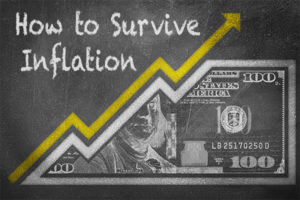Auto Loans Easier to Borrow as Defaults Hit All-Time Low
As millions of Americans struggle to keep up with monthly expenses in a tough economy, consumers in search of automobile loans are in for some good news: not only have auto loan lenders have eased up on strict credit conditions over the past year, but default rates on the loans have steadily decreased.
During the first seven months of 2012, auto sales in the United States rose to 8.4 million vehicles, an increase of 14 percent compared to last year.
Automakers and economists attribute a portion of the increase on the less stringent borrowing conditions which allow people with lower credit scores to take out auto loans. The number of subprime loans, those granted to borrowers with damaged credit, increased by 9 percent in the second quarter from one year ago.
Delinquency Rates Decrease
According to the credit bureau TransUnion, the amount of auto loans overdue by at least 60 days have fallen over the past few months. The delinquency rate of auto loans is now at its lowest since TransUnion first began tracking data more than a decade ago.
The data show the auto loan default rate fell during the second quarter of this year from 0.36 percent to 0.33 percent. This is a 25-percent decline from 0.44 percent from the previous year, according to TransUnion.
Economists are hopeful the reduction in delinquent accounts is a positive sign about the economy, as 37 states saw a decrease in defaults. The states with the highest delinquency rates were Louisiana, Mississippi and Oklahoma with rates ranging from 0.55 to 0.6 percent.
Financial experts say they are not shocked by the decrease in auto loan delinquencies since consumers highly value reliable transportation during a tough job market. Consumers also may be making a concerted effort to make timely payments because they have equity already established in their vehicles and don’t want to jeopardize losing them to repossession.
Changes in Car Ownership
A survey conducted by AutoMD.com showed people are now less likely to upgrade their vehicle every couple of years, as Americans have done in the past. The poll of nearly 4,000 respondents completed by the automotive repair source showed 78 percent of consumers planned on keeping their cars at least a decade. As people keep their cars longer, they are more likely to have paid off the debt. More than half of survey respondents indicated they were not likely to return to buying new vehicles every few years, even once the economy improves.
Since people tend to hold onto their cars longer these days, some economists attribute the reduction in defaults to the lack of turnover rate. And because lenders have eased up on some financing options it has become easier for consumers to spread car payments out over more months, thereby making borrowers more likely to keep up with monthly car expenses. A car loan spread out over 84 months is much more doable for people on a budget, for example, than a 36-month loan.
Although the news is positive for consumers in need of a new car, some economists fear the movement toward higher-risk loans could cause problems down the road, eventually elevating delinquency rates.
Sources:
- Duarte, J. (2012, July, 23). People keeping vehicles longer is a trend that's here to stay. Digital Journal. Retrieved from http://digitaljournal.com/article/329192#ixzz265EcRDlY
- Woodyard,C. (2012, August 22). Auto loan defaults drop to lowest level since 1999. USA Today. Retrieved from http://content.usatoday.com/communities/driveon/post/2012/08/auto-loan-defaults-drop-to-lowest-level-since-1999/1#.UE3567KPWuM
- Hirsch, J. (2012, August 23). U.S. auto loan delinquency rate hits 13-year low. Los Angeles Times. Retrieved from http://articles.latimes.com/2012/aug/23/business/la-fi-autos-loan-delinquencies-20120823
- Moeller, P. (2012, September 4). Consumers Continue to Cut Debt and Repair Finances. U.S. News. Retrieved from http://money.usnews.com/money/blogs/the-best-life/2012/09/04/consumers-continue-to-cut-debt-and-repair-finances


















